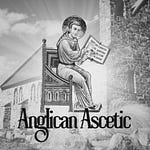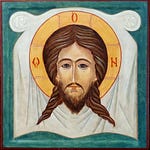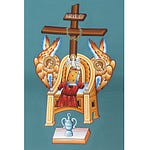Today I want to reflect on the fact that we are made in the image and according to the likeness of God. To begin I want to bring to our mind one of the characteristics of Jesus Christ that we must always remember. It is taught to the Church by Saint Paul in his epistle to the Hebrews. It comes in the thirteenth chapter, verse 8: “Jesus Christ is the same yesterday and today and forever.” I say we must always remember this, for a specific reason. And that reason is that we are prone to forget it, or to not consider the profound implications of Paul’s teaching. Jesus Christ in everything that He is, is the same yesterday and today and forever. Jesus Christ is both God and man yesterday and today and forever. Jesus Christ is dying on the Cross yesterday and today and forever. Jesus Christ is being born yesterday and today and forever. Anything we say about Jesus is true of Him yesterday and Him today and Him forever. The list here could be very long.
This is captured cryptically in what Jesus said to Moses at the Burning Bush: Moses said, “When I go to the children of Israel and say to them, The God of your fathers sent me to you, and they ask me, What is His Name? what shall I tell them? Jesus said in response: I am Who I am; which is also translated, I am the Existing One. He told Moses to say to the children of Israel, “The Existing One sent me to you.” He always exists, in the wholeness of Himself, as He was in the beginning, is now, and ever shall be.
I said this has profound implications. One of which is this, that Christ has always had a human body, has a human body now, and will have a body forever. And so, Jesus Christ’s Incarnation is the same yesterday and today and forever. His taking of human flesh has been from all time, is happening now, and will happen forever. This flies against the common understanding that Him having a body was only for the relatively short time that He walked on earth, usually construed to be thirty-three years. Before He was born of Mary, the common thinking goes, He had no body but was divine, fully God in heaven with the Father and Holy Ghost; then for thirty-three years He had a human body, which died on the Cross; and since His entombment and His resurrection and ascension, He again has no body. But His resurrection appearances were in a body which ate and drank and was able to be seen and touched and heard; it even had the wounds from His crucifixion on the body. All that is from the resurrection accounts in the Gospel. He had a Body then. Did He have a Body before His Nativity?
Saint Paul calls Christ the “Last Adam,” and speaks of the man created in Genesis 2 as “the First Adam,” we would have to say, Yes He had a Body before His Nativity. And we know that the First Adam, along with Eve, was created in the image and according to the likeness of Christ. In their humanity, in their body, they were stamped in Christ’s image. A rubber stamp imprinted an image in ink onto paper, and the image comes from the design of the rubber die that the ink attaches to and by the force of the stamp is left on the paper. Adam and Eve, in fact all of humanity, are stamped in the image of the rubber die. The image is of Christ, so it must be that He exists, and that He has a Body, and that Body is imprinted upon Adam, else there would be no design on the rubber die to replicate.
Christ’s incarnation, His taking of a Body, can be seen to be happening in the making of man in the image of Christ. Christ’s image is an image both divine and human. This was imprinted on Adam and Eve, and is imprinted on each one of us. In the words of Origen, century Church Father, “It is our inner man, invisible, incorporeal, incorruptible, and immortal which is made ‘according to the image of God.’”
What this points to is the deep spiritual revelation that, because each of us bears Christ’s image, that starting with our baptism, Christ begins to be born in us. All humans bear Christ’s image, as our inner world in our body. Being baptized, being born again, begins the process of reclaiming the likeness to Christ, which is our likeness to His holy virtue, which through discipline we learn to follow the blessed steps of His most holy life. This is what Our Lord is after in His teaching in the Gospel when He says, “When a woman has delivered the baby, she no longer remembers the anguish, for joy that a human being has been born into the world.” This squarely aligns with the beginning of John’s Gospel, when John says, “As many as received Him, to them He gave the right to become children of God, to those who believe in His Name, who were born, not of blood, nor of the will of the flesh, nor of the will of man, but of God.”
In Baptism, we are taken into Christ, and therefore, Christ enters into us. We are made in His image in our inward body, and in Baptism He begins to grow in us, for He is born in us, that the life we live conforms in likeness to the image we are made in. We conceive the holy Jesus in our heart, and bear Him in our mind. We are His Body; He in us and we in Him. It is His Church and its members. For He is growing in each Christ’s heart and mind: growing, maturing, and thereby transforming us. Jesus, the true human being, the finished, perfected and completed human being, lives in us and feeds us sacramentally that we might grow into His fullness, into His completeness, into likeness with His sacred humanity: a humanity of sacrificial love that voluntarily lays down its life for others. This is the joy of being a human being in Christ, Who is the last human being, the perfected human being, the completed human being. He Who is the same yesterday and today and forever lives in us, that we can live in Him Who lives and reigns with the Father in the unity of the Holy Ghost, ever one God, world without end. Amen.











Share this post